|
This is about, primarily, the
role that the 45th Infantry Division played in Sicily. I am aware that
other divisions American and British were involved and you can find many
other resources to study them. This is not the complete story of every
soldier, nor details every activity of the Thunderbirds. It is based on
what information I presently have available. It will hopefully answer
the questions of where exactly were they and to some degree what did they
experience.
Background
With War clouds looming across
the world's sky the 45th Infantry Division was activated to federal service
in September of 1940. Just over a year latter on December 7th, 1941 Japan
attacked Pearl Harbor, Hawaii and shortly after Germany declared war on
the United States. Those who were fighting and dying already, Britain
and the Soviet Union, were eager to see US get involved with men as well
as materials.
By August of 1942 it was decided
that the best place to get the US Army involved was to be North Africa.
In the words of Winston Churchill, "Well, if the enemy rushes into
Tunisia where he can probably forestall us if he so determines, where
is a better place to kill Germans?" It was decided in September that
November 8th would be the date for invasion giving three months for planning,
training, and transport.
At this time the 45th Infantry
Division was conducting amphibious landing training at Fort Devens/Camp
Edwards, Massachusetts. When training was complete the Thunderbirds anticipated
going to War, but instead went to Fort Drum, New York to freeze for the
winter. Events overseas unfolded without them.
Fighting in North Africa continued
from November 1942 through early May 1943. The US Army experienced a major
set back at the Battle of Kasserine pass in February of 1943, leaving
our British Allies serious doubts on the capabilities of the American
fighting force. At the Casablanca Conference it was decided that Sicily
and Italy would be the next major objectives, before a Cross Channel landing
in France.
All planning for further operations
were subordinate to considerations for this future event (which finally
occurred June 6th, 1944). Arguments continued between resources allocated
for Northern France and activities in the Mediterranean Sea. Planning
almost appears to be done on a basis of "We're not ready to invade
France today, what else can we do?" basis. No long range planning
occurs in any detail through out Sicily and Italy.
Planning in earnest for the invasion
of Sicily begins in May after the Surrender of German forces at Bizerte,
Tunisia. Fighter coverage from Malta seems to be the deciding factor as
to where the Allies land, based on this suggestions to land at Catania
and Palermo were disregarded. General Dwight D. Eisenhower was chosen
as supreme Allied commander for the Sicilian operation, with three Britons
as his land, air, and sea component commanders. General Sir Harold Alexander
was Eisenhower's principal deputy and the actual commander of Allied land
forces. Alexander's 15th Army Group directed the U.S. Seventh Army, under
the command of Lt. Gen. George S. Patton, Jr., and General Sir Bernard
Montgomery's British Eighth Army.
The sea born invasion force landing
the British Eighth Army was designated the Eastern Naval Task Force and
those for U.S. Seventh Army were Western Naval Task Force. Montgomery's
troops had the primary burden, landing in Pozzallo, Pachino and Syracuse
thrust northward, capturing in succession Augusta, Catania, and the airfield
complex at Gerbini before capturing Messina and closing off any chance
at resupply and reinforcements of Axis troops. Patton's Seventh Army as
envisioned by the plan was to seize key airfields and protect Eighth Army's
left Flank. After the initial landing Seventh Army's objectives were a
bit vague.
Seventh Army/ Western Naval Task
Force:
Task Force 80, supporting Joss
Force commanded by General Lucien K. Truscott's heavily reinforced 3rd
ID;
General Bradley's II Corp was
supported by:
Task Force 82 landing U.S. 1st
Infantry Division on Dime beach
Task Force 85 landing the U.S.
45th Infantry Divison on Cent beach.
Task Force 85
|
|
USS Ancon AGC - 4,
June 11th 1943
Having Left Newport News, VA. Enroute North Africa
Flag ship of Cent Attack Force 85
|
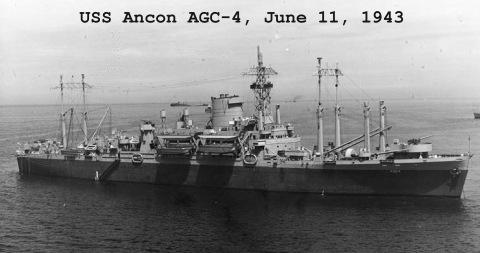 |
Transdiv 1 (179th Regimental Combat Team)
|
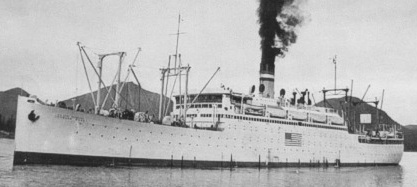 |
USS
Leonard Wood APA - 12
transport flagship under the command of Commodore W. B. Phillips,
USN, carried the Combat Team commander, his staff, and troops of the
1st Battalion 179th Infantry. |
| USS
Dorothea L Dix AP - 67, photo taken during operation Husky, Carried
2nd Bn Soldiers |
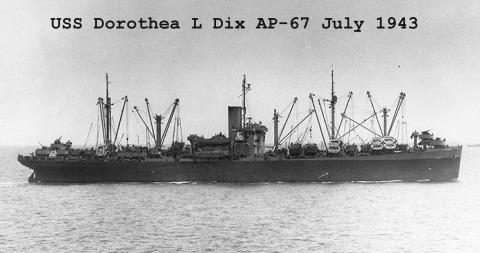 |
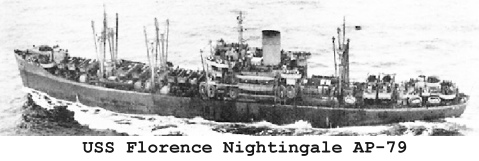 |
USS
Florence Nightingale AP - 79 Carried 3rd Bn 179th Infantry |
| USS
HARRY LEE AP - 10, alternately maligned as the "Listing Lee"
or "Horrible Harry," carried Service Co.,Anti-Tank Co.,Cannon
Co.,Medical Detachment, and Headquarters Company |
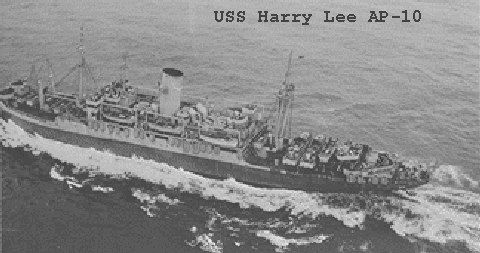 |
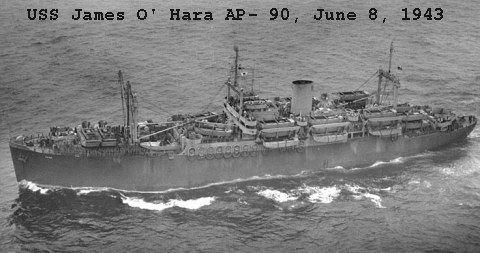 |
USS
James O' Hara AP - 90
B Btry, 189th FA |
USS
Alcyone AKA -7
served as the Regimental cargo vessel, carrying a supplementary 5
day supply of gas, ammunition and rations as well as additional equipment
that was not essential for the initial landing. |
.jpg) |
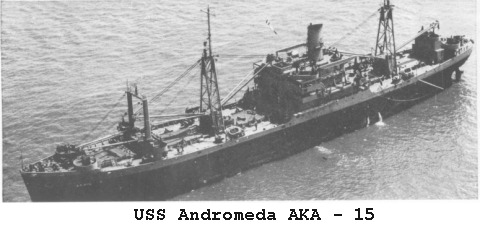 |
|
|
As of this time I do not
know on which ships they were transported but Transdiv 1 also had
the 160th Field Artillery Battalion, B Company 120th Medical Battalion,
1 Company of the 2nd Chemical Mortar Battalion, and B Company 120th
Engineers.
Transdiv5 (157th Regimental
Combat Team)
|
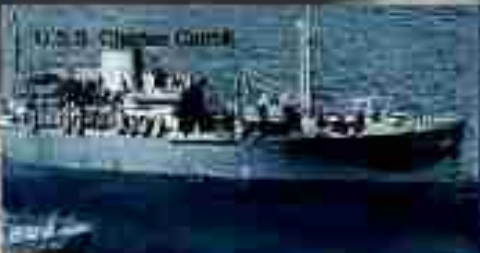 |
USS
Charles Carroll
carried the Combat Team commander, his staff, and troops of the 1st
Battalion 157th Infantry. |
| USS
Thomas Jefferson |
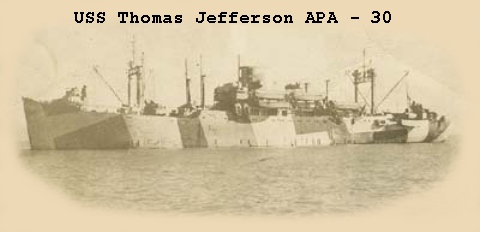 |
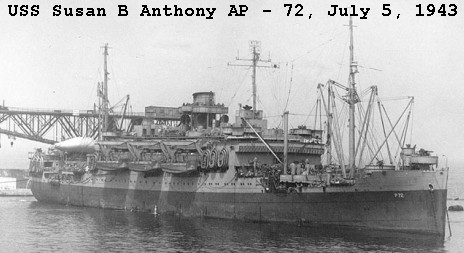 |
USS
Susan B. Anthony AP- 72,
Oran Algiers July 5th 1943 |
USS
William P. Biddle APA - 8
|
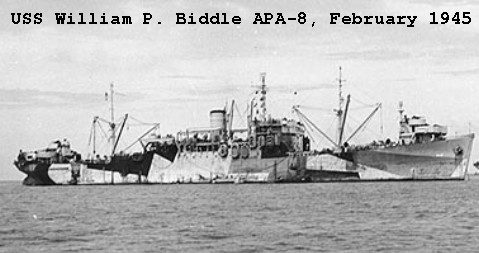 |
 |
USS
Procyon
served as the Regimental cargo vessel, carrying a supplementary 5
day supply of gas, ammunition and rations as well as additional equipment
that was not essential for the initial landing. |
| USS
Arcturus |
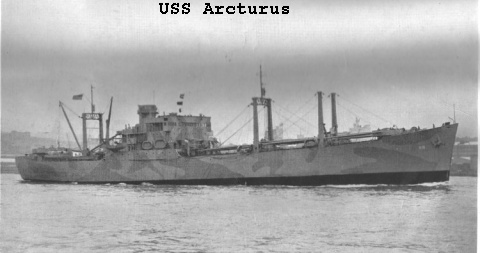 |
|
As of this time I do not
know on which ships they were transported but Transdiv 5 also had
the 158th Field Artillery Battalion, A Company 120th Medical Battalion,
1 Company of the 2nd Chemical Mortar Battalion, and A Company 120th
Engineers. Possibly also A btry 189th FA
Transdiv7 (180th Regimental
Combat Team)
|
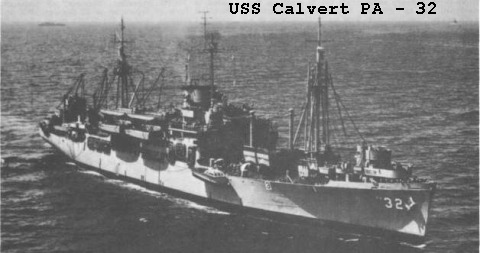 |
USS
Calvert PA - 32 |
| USS
Neville APA - 9 |
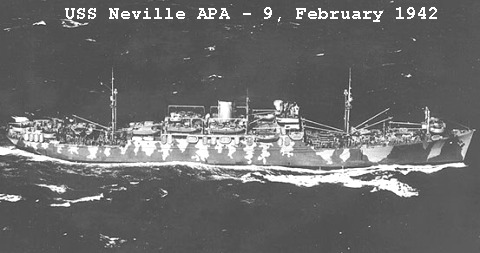 |
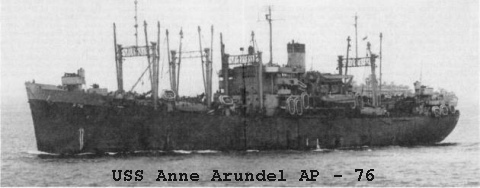 |
USS
Anne Arundel AP - 76 |
| USS
Frederick Funston AP - 89 |
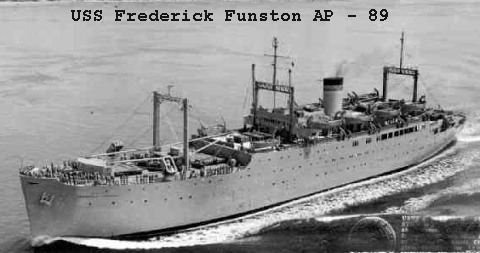 |
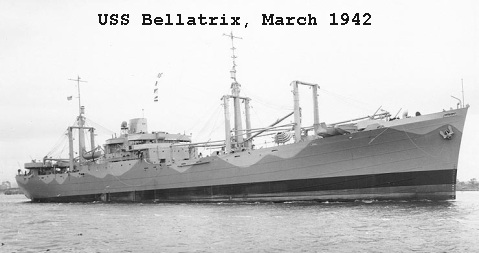 |
USS
Bellatrix AKA - 3
served as the Regimental cargo vessel, carrying a supplementary 5
day supply of gas, ammunition and rations as well as additional equipment
that was not essential for the initial landing. |
|
Which ships transported
which units of the 180th RCT, I presently do not know, but Transdiv
7 also had the 171st Field Artillery Battalion, C Company 120th
Medical Battalion, 1 Company of the 2nd Chemical Mortar Battalion,
and C Company 120th Engineers. Possibly also C btry 189th FA
Other ships in Task Force
85 Supporting the landing of the 45th Infantry Division were:
|
USS
Philadelphia (1 CL)
H.M.S. Abercrombie
USS Staff (AM114)
USS Skill (AM115)
USS Speed (AM116)
USS Strive (AM117) |
USS Davidson
(DD618)
USS Mervine ( DD489)
USS Quick (DD490)
USS Beatty (DD640)
USS Tillman (DD641)
USS Cowie (DD632)
USS Knight (DD633)
USS Doran (DD634)
USS Earle (DD635) |
USS
Parker (DD604)
USS Laub (DD613)
USS Kendrick (DD612)
USS Mac Kenzie (DD614)
USS Boyle (DD600)
USS Champlin (DD601)
USS Nields (DD616) |
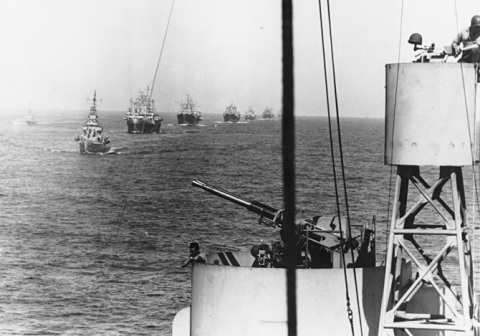 |
View
of the task force enroute to Sicily, from the USS Ancon |
| July
8th, 1943 USS Leonard Wood and other ships of Task Force 85 |
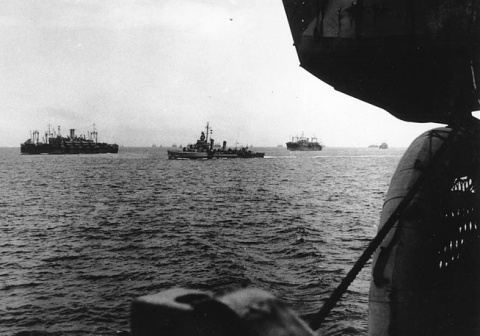 |
| |
|
|
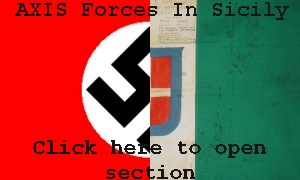 |
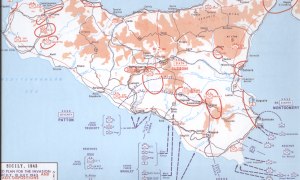 |
|
The above
section covers
the German and Italian forces opposing the ALLIES
|
Click
above to see LARGE Map of Sicily with Location of opposing forces
on
July 10th, 1943
|
|